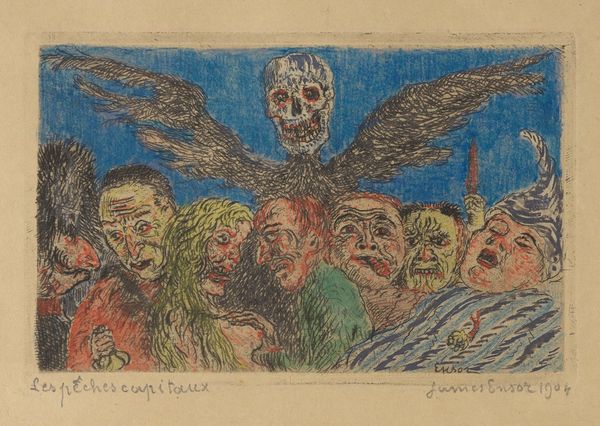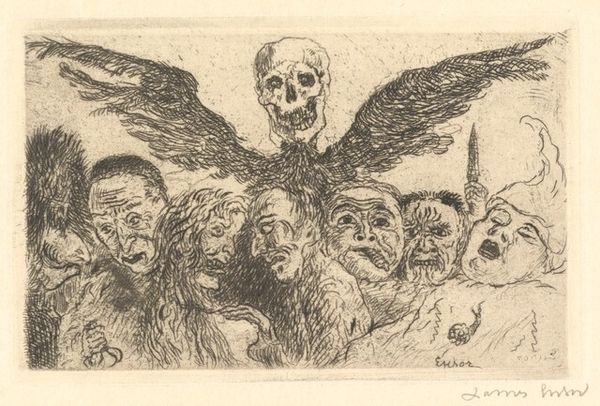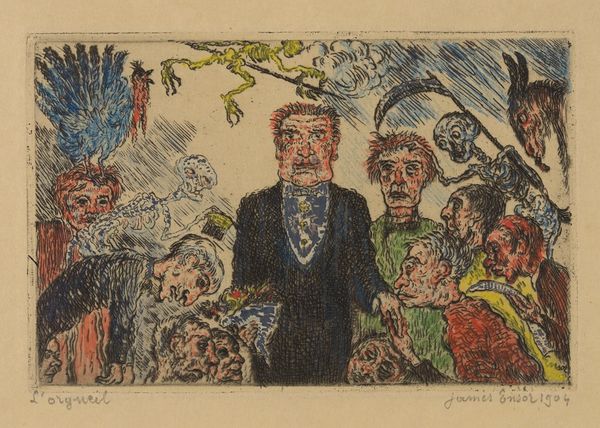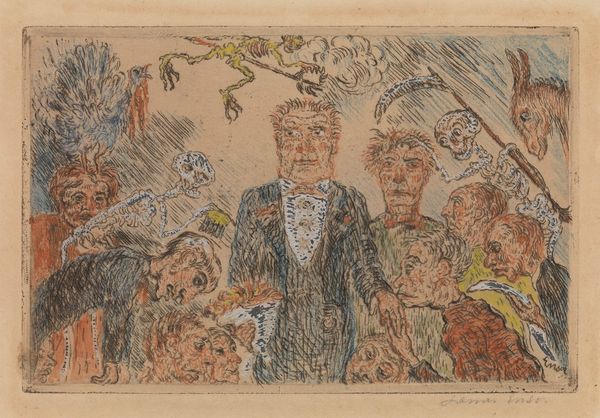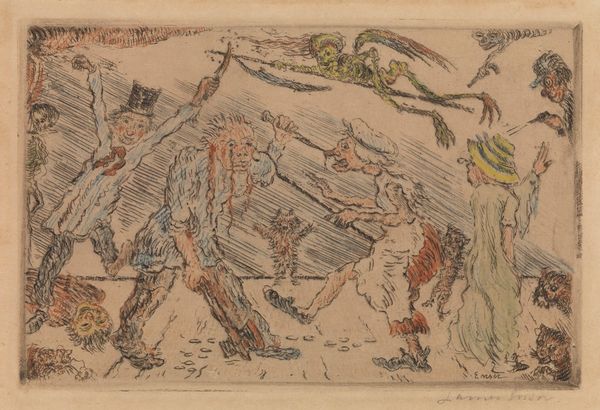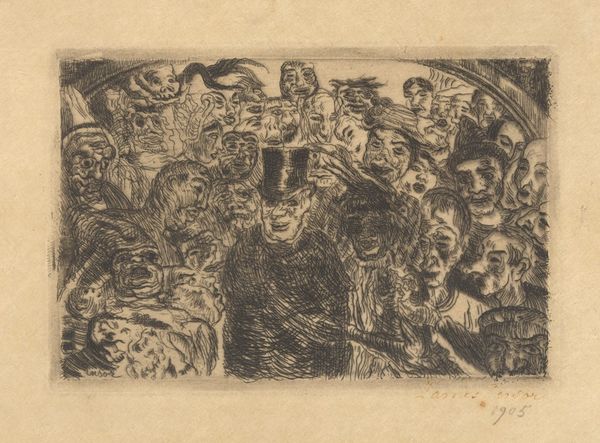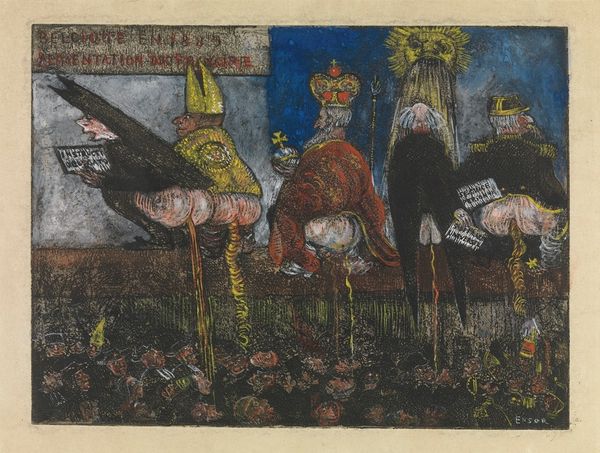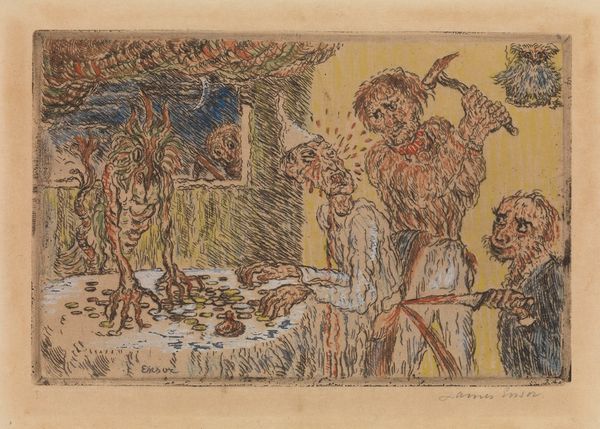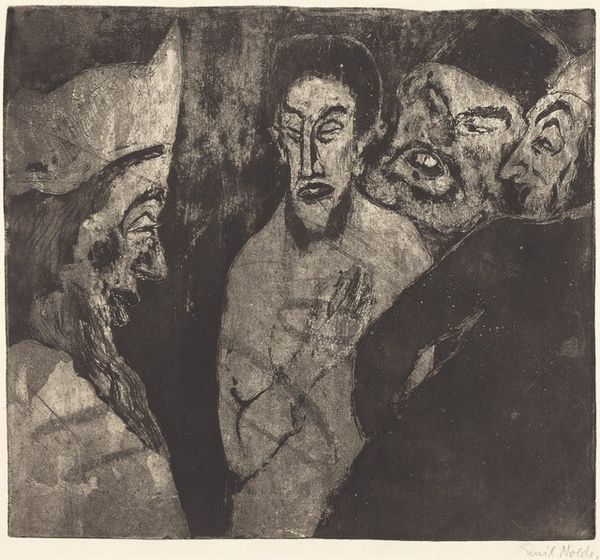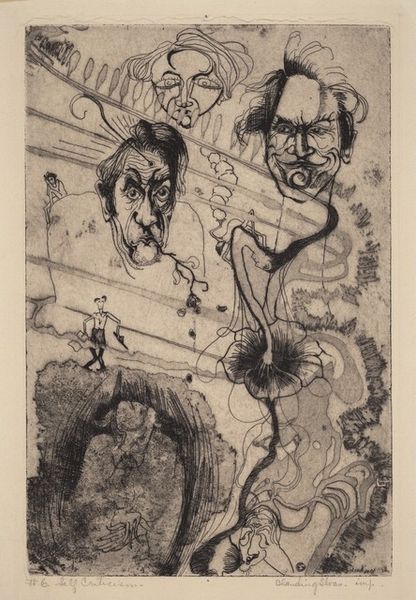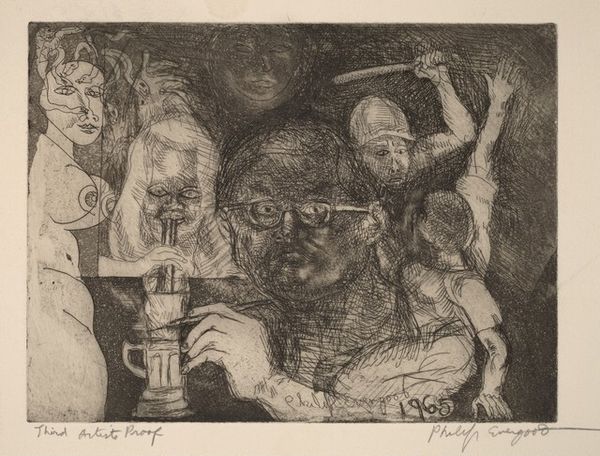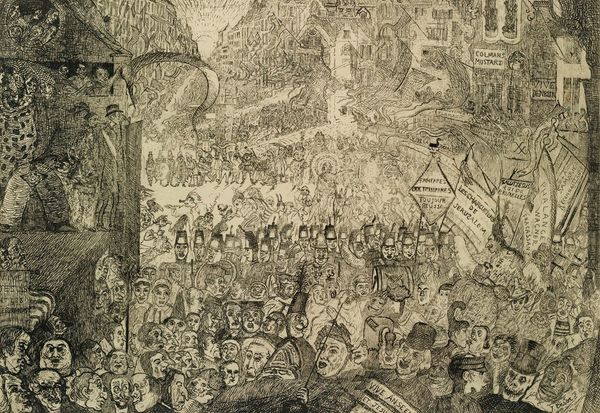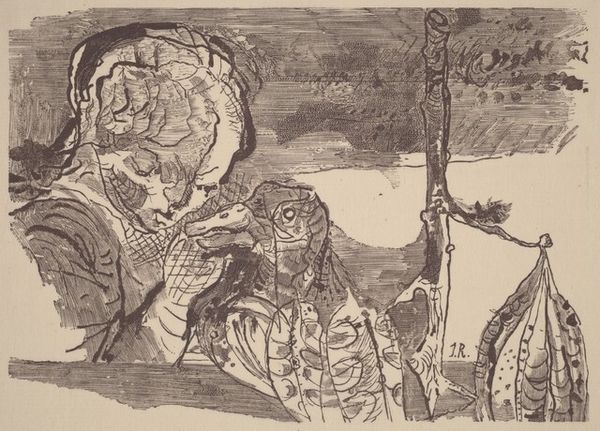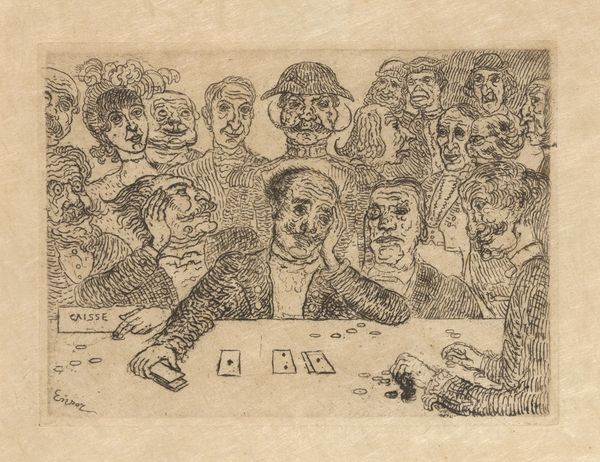
drawing, painting, oil-paint, paper, ink
#
portrait
#
drawing
#
narrative-art
#
painting
#
oil-paint
#
figuration
#
paper
#
oil painting
#
ink
#
expressionism
#
symbolism
#
watercolour illustration
#
grotesque
#
watercolor
Copyright: Public Domain: Artvee
Editor: This is "The Deadly Sins Dominated by Death," created by James Ensor in 1904, using oil paint, ink, and watercolor on paper. The artwork has this unsettling and grotesque vibe to it. What is your perspective on this painting? Curator: The visceral nature of the imagery speaks volumes. Ensor’s process of layering these mediums – the initial drawing in ink, then building with watercolor and oil – reflects a societal layering too. He's engaging with themes of death and morality but doing so through readily available materials. How do you think his choices of material relate to the grotesque nature you mentioned? Editor: It almost feels…cheap, or readily accessible, making it all the more confronting since death and sin would apply to everyone regardless of status? I'm struck by the crude and almost frantic application. Curator: Exactly. Ensor is leveling the playing field, democratizing sin, so to speak. He’s using artmaking as a way to engage with his society’s anxieties, showing the messy and, yes, cheap realities of these moral failings. Do you see how the layering creates a sense of claustrophobia, as though the figures are trapped not just by Death, but by the very materials used to depict them? Editor: That’s a great point, like the sins themselves are suffocating the figures in the piece. Are there particular colors that strike you as important for this material reading? Curator: The muted blues and browns, mixed with the flashes of brighter colours, point to the inherent contradictions within the society Ensor lived in – appearances versus reality, hidden vice, and blatant displays of wealth covering internal decay. Consider the source of the pigments at this time as well. These commercially available colors, produced en masse, were indicative of burgeoning capitalism that potentially fueled some of the "sins" he is showing us here. Editor: I hadn't thought about it that way, considering the pigments themselves as reflections of societal values and their mass-produced quality and consumption! It makes Ensor's artwork an active criticism, doesn’t it? Thanks for this deeper insight. Curator: Absolutely. Thinking about art through the lens of materials and process allows us a unique view of society itself, showing artmaking and societal concerns intimately intertwined.
Comments
No comments
Be the first to comment and join the conversation on the ultimate creative platform.
